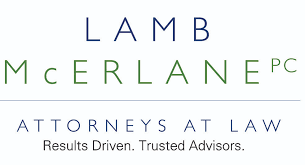Forbearance Agreements – Temporarily Relief for Borrowers

 By Guy A. Donatelli
By Guy A. Donatelli
Recently, the economic fallout from measures to combat the COVID-19 Coronavirus outbreak has put into sharp focus how easily unexpected events, such as unemployment, illness and other business reversals, can disrupt routine consumer and business relationships. It also has taught us how, in times of crisis, outside intervention may be necessary to get things back on track.
We have watched as federal and state governments have mobilized to pass moratoriums on tenant evictions, suspensions of payment of mortgage and rent obligations. We have seen bankruptcy courts, too, accommodate families making efforts to complete their bankruptcy plans by allowing additional time to make payments.
Tools intended to provide temporary relief to borrowers, however, are not new. Indeed, lenders and creditors often have been compelled to find creative ways to provide relief to borrowers experiencing financial difficulties. One of the most tried and true tools that lenders use is known as a “forbearance agreement.”
Loosely defined, a forbearance agreement is an arrangement between parties to an agreement (a lease, mortgage, domestic obligation or other form of loan or debt obligation), used during a time of financial hardship, which confirms the terms of the agreement while, at the same time, allows the borrower to temporarily postpone payments.
While forbearance agreements temporarily relieve borrowers of their obligations to make regular payments, these arrangements make clear that other obligations, including outstanding principal, interest, late charge payments and non-monetary provisions, continue in operate in force.
Forbearance agreements are temporary solutions that can be negotiated before or after a default. Forbearance terms can be whatever the parties believe is necessary to fit their specific situation. Forbearance agreements usually contain provisions confirming the duties and obligations under the agreement involved, the time period of the forbearance and the amounts of any delinquencies. Forbearance agreements also address enforcement remedies available to the creditor and the timing with which they can be pursued. They also may include a waiver of defenses the debtor may (or may not) have and the allocation of attorney’s fees.
Courts enforce forbearance agreements according to their terms, as they would with any contractual relationship. If a forbearance agreement is clear and unambiguous, courts may consider it a substitution for the underlying agreement.
Forbearance agreements can be forged in almost any ongoing relationship in which a brief suspension of payment obligations is necessary to allow a borrower or obligor time to recover from an unforeseen setback––for example, the current unanticipated world-wide economic downturn. After the crisis abates, the parties can restore the relationship and resume the terms of their original agreement.
Forbearance agreements protect borrowers from being declared in default while they try to get back on their feet, while providing creditors confirmation of their rights and concrete expectations as to when they may expect payment. In circumstances where the borrower is already in default, forbearance agreements can be used to postpone collection and enforcement activities while the parties attempt to work out credit issues amicably.
Forbearance agreements also will contain language more beneficial to the creditor than that which the original agreement calls for if the situation does not improve as intended. This is the consideration the lender receives in exchange for the agreement to forbear its rights and remedies. Generally, the language will acknowledge the relationship of the parties, including third party guarantors, as well as the obligations and the fact of the default.
These agreements typically also provide that certain underlying obligations remain binding and in effect; generally, they will state that the identified obligations set forth in the original agreements are not being replaced by the forbearance agreement. The defaulting party also may be asked to confirm that it has no defense or offset to the enforcement of the rights and remedies of the non-defaulting party.
Forbearance agreements usually include indemnity provisions running in favor or the non-defaulting party and often include release language from the defaulting party and any guarantors. Creditors can then use the forbearance documents to correct any deficiencies in the underlying documents.
It often makes sense for parties to consider executing a pre-negotiation agreement at the outset of their discussion of a forbearance agreement before any forbearance is needed. Pre-negotiation agreements are simple agreements that serve several purposes. First, they make it clear that nothing will be binding without a written, fully executed forbearance agreement; this way, the parties can avoid being inadvertently bound by their discussions.
Further, these agreements can preserve existing rights and allow the parties to avoid unintended waivers of rights and remedies. Pre-negotiation agreements can also assure confidentiality and exclusion of forbearance discussions from subsequent litigation should it occur.
Finally, the parties can avoid potential bad faith claims by making it clear from the outset that either party can terminate discussions at any time. These simple ground rules can go a long way to avoid some of the potential pitfalls that may make the parties initially reluctant to enter into meaningful discussions.
Because forbearance agreements are binding on all parties, and can replace an underlying contract, all parties must tread carefully before entering into such agreements and surrendering their respective rights and obligations. We recommend that anyone seeking to take advantage of this dispute resolution vehicle consult with counsel. The attorneys at Lamb McErlane are available to advise you in this important area. 610-430-8000. www.lambmcerlane.com.
________________________________________________________________________________________________

ABOUT THE AUTHOR
Guy A. Donatelli is a partner in the Litigation Department at Lamb McErlane PC. He concentrates his practice on employment, education and commercial litigation, representing individuals, businesses and municipalities in employment, business and land use disputes. 610-701-4419. gdonatelli@lambmcerlane.com.
________________________________________________________________________________________________
You Might Also Like
Pennsylvania Senate Considers Broadening Disclosure of Coronavirus Testing Records
West Chester-Based Lamb McErlane Opens Philadelphia Office, Adds Two Attorneys to the Firm
Washington Post: Chester County Residents Mostly Staying Put
Connect With Your Community
Subscribe to stay informed!
"*" indicates required fields






















![95000-1023_ACJ_BannerAd[1]](https://vista.today/wp-content/uploads/2023/03/95000-1023_ACJ_BannerAd1.jpg)























